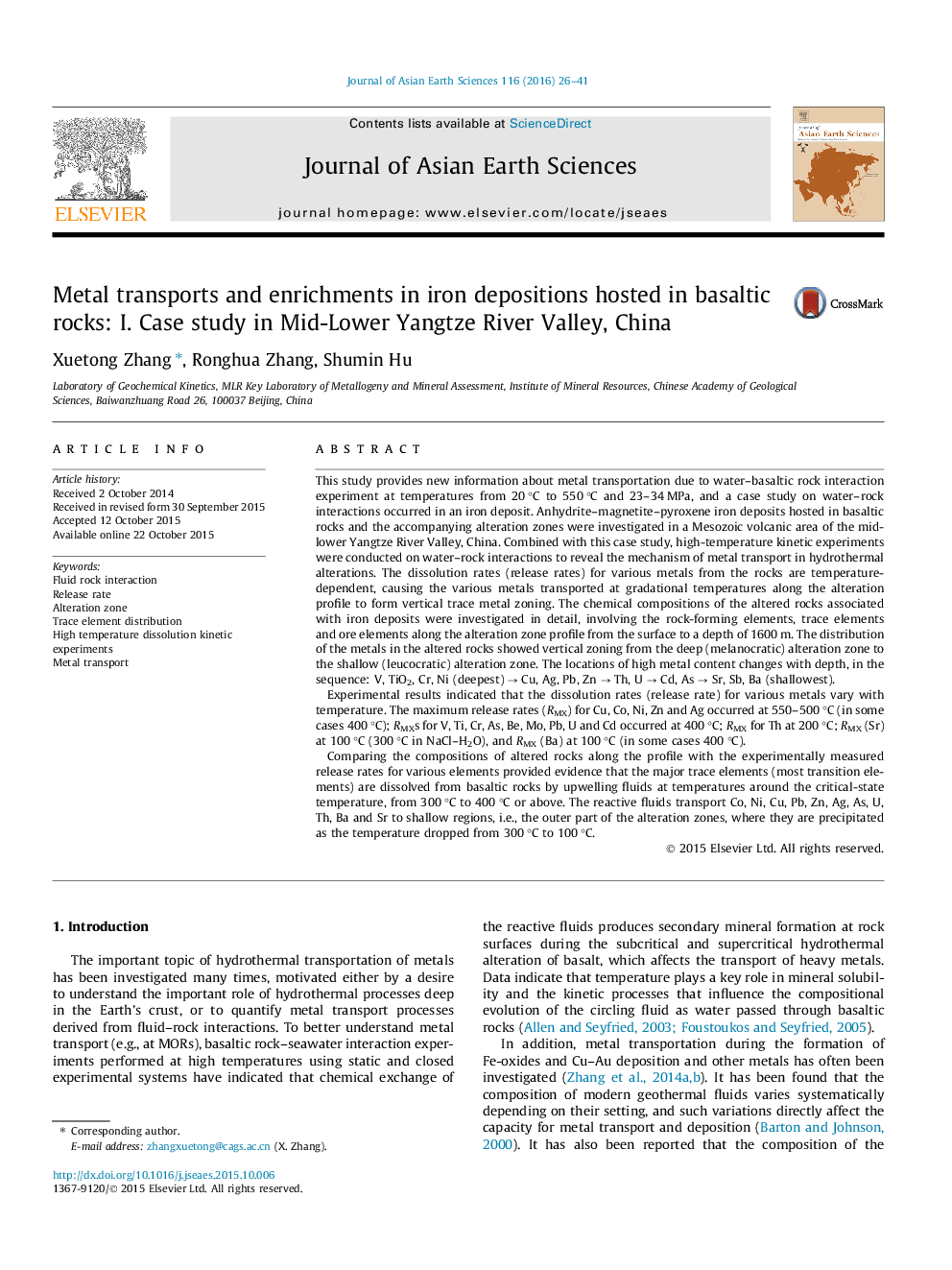| Article ID | Journal | Published Year | Pages | File Type |
|---|---|---|---|---|
| 4730251 | Journal of Asian Earth Sciences | 2016 | 16 Pages |
•Combined water rock interaction experiments with investigation of metal distribution in profile.•Metal transport experiments due to water–basalt interaction at temperatures up to 550 °C.•Release rates for metals are temperature-dependent, causing metal alteration zone in profile.•High release Si at >400 °C, for Cu, Co, Ni, Zn at 500 °C, V, Ti, Cr, As, Mo, Pb at 400 °C.•High release rate of Fe, Ca, Mg at >300 °C, for Th, Sr, Ba at 300–100 °C.
This study provides new information about metal transportation due to water–basaltic rock interaction experiment at temperatures from 20 °C to 550 °C and 23–34 MPa, and a case study on water–rock interactions occurred in an iron deposit. Anhydrite–magnetite–pyroxene iron deposits hosted in basaltic rocks and the accompanying alteration zones were investigated in a Mesozoic volcanic area of the mid-lower Yangtze River Valley, China. Combined with this case study, high-temperature kinetic experiments were conducted on water–rock interactions to reveal the mechanism of metal transport in hydrothermal alterations. The dissolution rates (release rates) for various metals from the rocks are temperature-dependent, causing the various metals transported at gradational temperatures along the alteration profile to form vertical trace metal zoning. The chemical compositions of the altered rocks associated with iron deposits were investigated in detail, involving the rock-forming elements, trace elements and ore elements along the alteration zone profile from the surface to a depth of 1600 m. The distribution of the metals in the altered rocks showed vertical zoning from the deep (melanocratic) alteration zone to the shallow (leucocratic) alteration zone. The locations of high metal content changes with depth, in the sequence: V, TiO2, Cr, Ni (deepest) → Cu, Ag, Pb, Zn → Th, U → Cd, As → Sr, Sb, Ba (shallowest).Experimental results indicated that the dissolution rates (release rate) for various metals vary with temperature. The maximum release rates (RMX) for Cu, Co, Ni, Zn and Ag occurred at 550–500 °C (in some cases 400 °C); RMXs for V, Ti, Cr, As, Be, Mo, Pb, U and Cd occurred at 400 °C; RMX for Th at 200 °C; RMX (Sr) at 100 °C (300 °C in NaCl–H2O), and RMX (Ba) at 100 °C (in some cases 400 °C).Comparing the compositions of altered rocks along the profile with the experimentally measured release rates for various elements provided evidence that the major trace elements (most transition elements) are dissolved from basaltic rocks by upwelling fluids at temperatures around the critical-state temperature, from 300 °C to 400 °C or above. The reactive fluids transport Co, Ni, Cu, Pb, Zn, Ag, As, U, Th, Ba and Sr to shallow regions, i.e., the outer part of the alteration zones, where they are precipitated as the temperature dropped from 300 °C to 100 °C.
